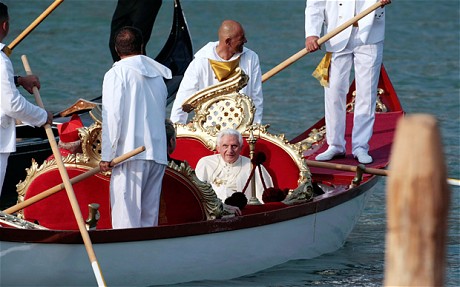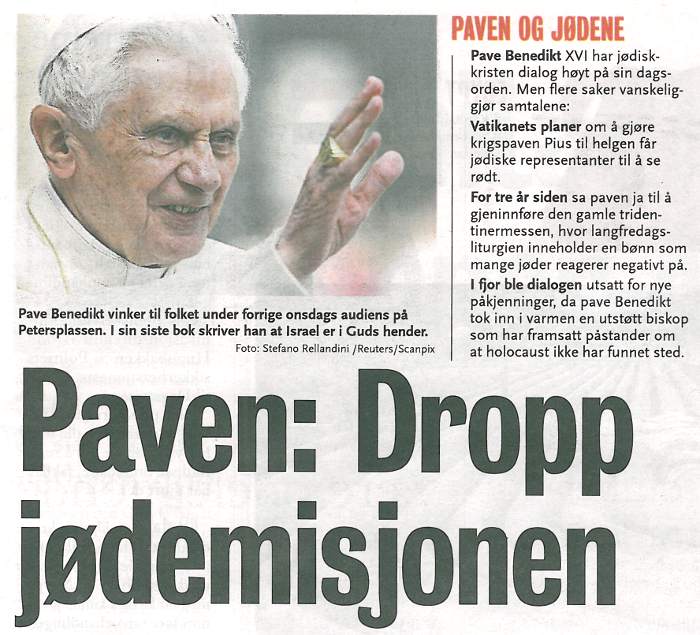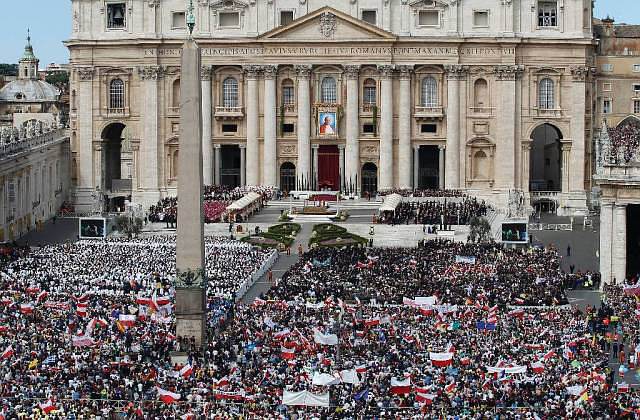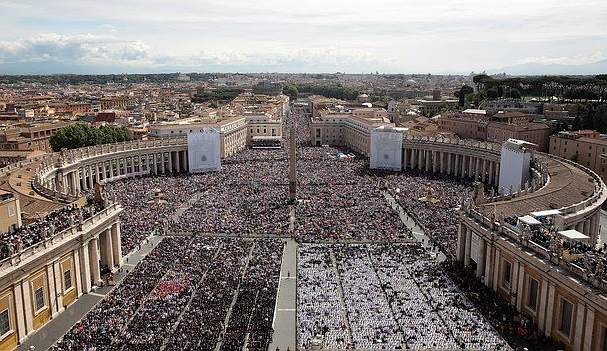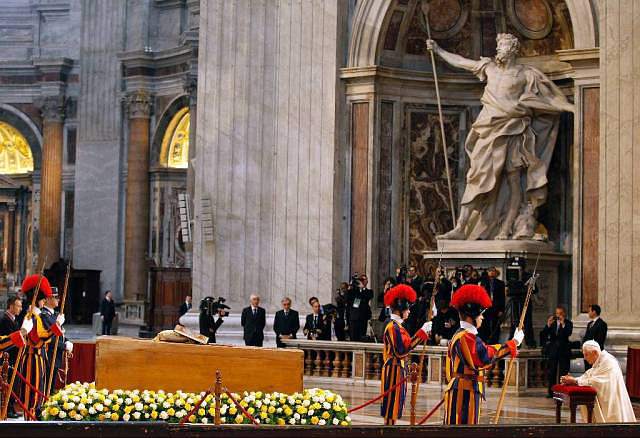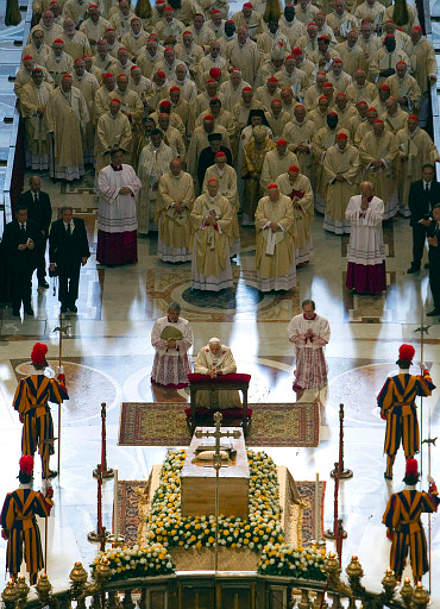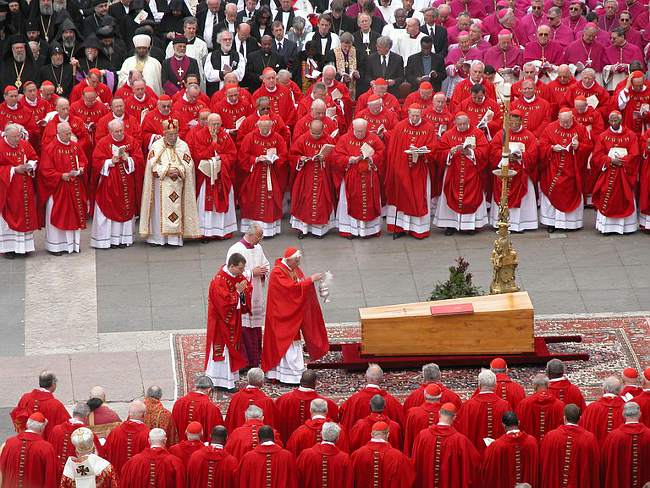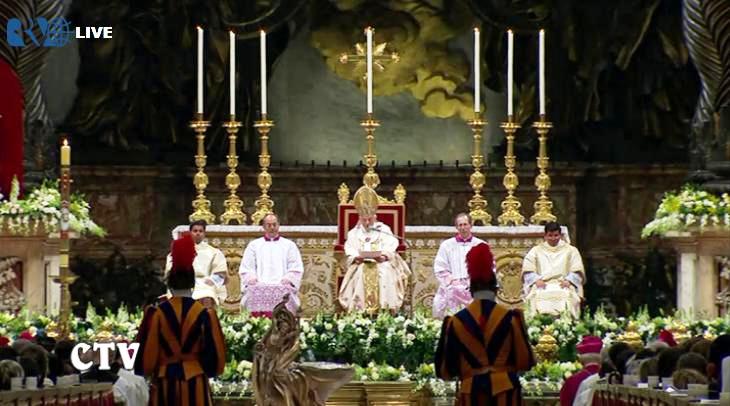Martin Mosebach uttaler seg igjen om liturgi, paven og den tradisjonelle messen
Martin Mosebach ble intervjuet i Die Welt 23. mai om Vatikanets nye dokument, som presiserer en del ting rundt feiringen av den tradisjonelle latinske messen. Intervjuet er nå oversatt til engelsk, slik at flere kan lese Mosebachs ganske «friske fraspark», som begynenr slik:
Four years ago, Pope Benedict XVI, against the opposition of the great majority in the Catholic Church, restored the old Latin liturgy to equality with the new vernacular form of the celebration of the mass, which had been mandated since 1969. … A week ago, the Vatican, in a papal letter, reaffirmed its determination of 2007 and clarified some disputed questions regarding its practical application. Martin Mosebach, the recipient of the Büchner prize, is one of the most fervent admirers and defenders of the old Liturgy.
Die Welt: In 2007, Pope Benedict XVI, in a special motu proprio, freed the ancient Gregorian liturgy for the Catholic Church. Why does the Vatican publish instructions four years later on how the will of the pope is to be implemented?
Martin Mosebach: The enemies of the great liturgical tradition of the Roman Church in many cases have not accepted the permission given to the Old Rite. They often tried to ignore the pope’s motu proprio and sought to maintain obstacles. They tried with bureaucratic methods to render ineffective the pope’s generosity. Therefore, the Vatican had to be clearer if it wanted to maintain the motu proprio.
Die Welt: The Instruction speaks of “two usages of the one Roman rite.” Doesn’t this open the door to a creeping new schism?
Martin Mosebach: There’s already a schism, not between supporters of the new and old rites, but between those Catholics who adhere to the old sacramental theology of the Church as was solemnly confirmed by Vatican II, and those who assert that Vatican II founded a new Church with a new theology and new sacraments. This latter doctrine has been diffused wholesale and against the better knowledge of its promoters, in the seminaries, universities and Catholic academies. This is what has fostered the danger of a schism.
Die Welt: “What was sacred for prior generations remains sacred and great also for us as well; it cannot be suddenly prohibited altogether or even judged harmful.” The Instruction cites here the pope. But wasn’t this the intention of the overwhelming majority of the Catholic bishops in the last 40 years?
Martin Mosebach: Yes, it is regrettably true that a not small part of the Catholic bishops, in a suicidal frenzy, attempted to separate from the Catholic Tradition and to cut the Church off from the source of her vitality. In the sentence you have cited, the pope has given them some tutoring in ecclesiology.
Die Welt: How can the Roman liturgy in the “usus antiquior “ be offered today “to all the faithful “ if only a fraction of the faithful understand Latin?
Martin Mosebach: At all times only a few Catholics have been able to follow the Latin Mass word for word. Europe looks back on well over a thousand years of glorious Catholic culture without the people being able to understand Latin. They understand something more important: that in the rite the Parousia – the mystic presence – of the Lord takes place. Without this understanding, a person has understood nothing of the Mass, even if he thinks he understands every word. Moreover, for a long time there have been wonderful bilingual missals with which we can pray the mass with the priest. But it is indeed correct: the Old Rite requires a certain effort, a readiness to learn.
Die Welt: And how will precisely the promotion of the “older” rite further “reconciliation within the Church” after it has led to so much conflict until now?
Martin Mosebach: The conflict essentially is due to the misunderstanding, so perilous for the Church, that Vatican II established a new Church. The struggle surrounding this misunderstanding must be endured to the end. Covering it up with peaceful phrases doesn’t help the Church.
Die Welt: Pastors are invited to show “a spirit of generous welcome” to groups of faithful who would like to celebrate the Old Mass in Latin. Isn’t this naïve after the last few decades, in which such faithful were considered hopelessly old-fashioned and retrograde?
Martin Mosebach: Indeed, the faithful, who have adhered to the Old Rite or have discovered it just recently, were reviled in manner that, I hope, is not revealing of the spiritual worth of the reform. ….


 … Pope Benedict wasted no time in establishing the themes and the tone of the visit, right from the get-go. In Aquileia, the Holy Father’s first public remarks were at the Piazza del Capitolo outside the Basilica of Aquileia. Often these greetings are really just an exchange of official pleasantries, but this time, Pope Benedict praised the Church of Aquileia in a prose that waxed rhapsodic.
… Pope Benedict wasted no time in establishing the themes and the tone of the visit, right from the get-go. In Aquileia, the Holy Father’s first public remarks were at the Piazza del Capitolo outside the Basilica of Aquileia. Often these greetings are really just an exchange of official pleasantries, but this time, Pope Benedict praised the Church of Aquileia in a prose that waxed rhapsodic.
